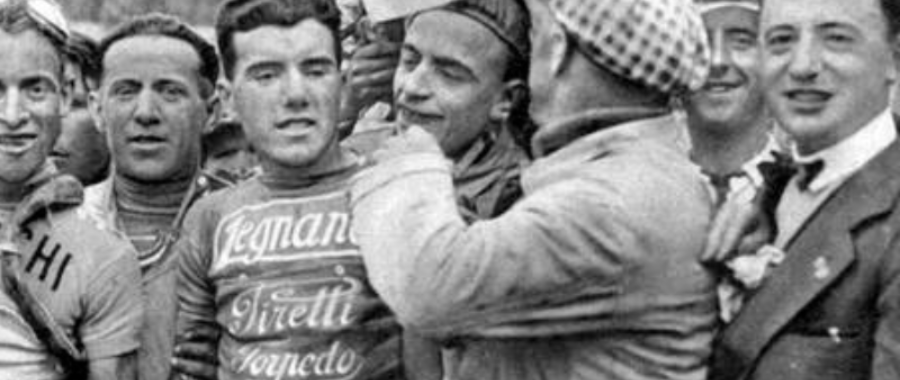Alfredo Binda's story about having been paid to skip the Giro d'Italia in 1930 is pretty well known among road cycling enthusiasts.
But have you ever wondered who was the winner of Giro d'Italia that year?
In the year when Giro d'Italia organizers decided to pay Alfredo Binda not to participate in the race, a 21-year-old neo-pro rider named Luigi Marchisio seized the opportunity of a lifetime with the Legnano team.
 And that’s largely his story, because aside from winning the Giro d'Italia in 1930, Marchisio had few other major successes. He had claimed the National Championship for independent riders two years earlier, which secured him a contract with Legnano, as the teammate of Alfredo Binda.
And that’s largely his story, because aside from winning the Giro d'Italia in 1930, Marchisio had few other major successes. He had claimed the National Championship for independent riders two years earlier, which secured him a contract with Legnano, as the teammate of Alfredo Binda.
In 1930, with Binda absent, Legnano’s Giro team was built around the young Marchisio, and he rose to the occasion.
That year, the race made its first visit to Sicily. In the third stage, Marchisio crossed the finish line first, taking over the lead in the general classification. He won the next stage as well and managed to hold onto the lead until the race’s conclusion.
Luigi Marchisio became the youngest rider ever to win the Giro d'Italia.
Ten years later, in 1940, an even younger rider, Fausto Coppi, broke his record, and to this day, Coppi remains the youngest Giro champion in history. (Meanwhile Olimpio Bizzi is the youngest Giro d'Italia stage winner since 1936)
Incidentally, Sicily’s introduction to the Italian Grand Tour didn’t come without its share of odd events. During the second stage, while riding near Mount Etna, Marchisio was struck in the eye by a piece of volcanic rock, forcing him to wear an eye covering for several days.
Marchisio returned to the Giro d’Italia the following year, the edition that introduced the iconic maglia rosa (pink jersey). He led the race for three days and had the honor of wearing the pink jersey before finishing third in the general classification.
Perhaps success came too early for Marchisio. After winning the multi-stage Barcelona-Madrid race in 1932, he failed to achieve further notable victories. He retired from professional cycling in 1936 at the age of just 27.
MORE FACES FROM THE GIRO D’ITALIA PELOTON
10 lesser-known Giro d’Italia winners
The Giro d’Italia stands as one of cycling’s grandest and most grueling stage races, showcasing legendary champions who… Read More »10 lesser-known Giro d’Italia winners
Faces from the Giro d’Italia peloton: Gösta Petterson
In the world of professional cycling, few stories are as quietly remarkable as that of Gösta Pettersson, the… Read More »Faces from the Giro d’Italia peloton: Gösta Petterson
Learn about the cyclist who won the Giro d’Italia during Alfredo Binda’s absence
Alfredo Binda’s story about having been paid to skip the Giro d’Italia in 1930 is pretty well known… Read More »Learn about the cyclist who won the Giro d’Italia during Alfredo Binda’s absence



